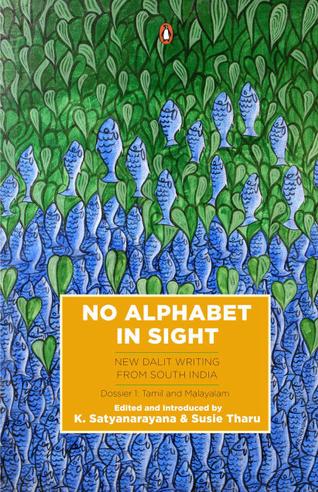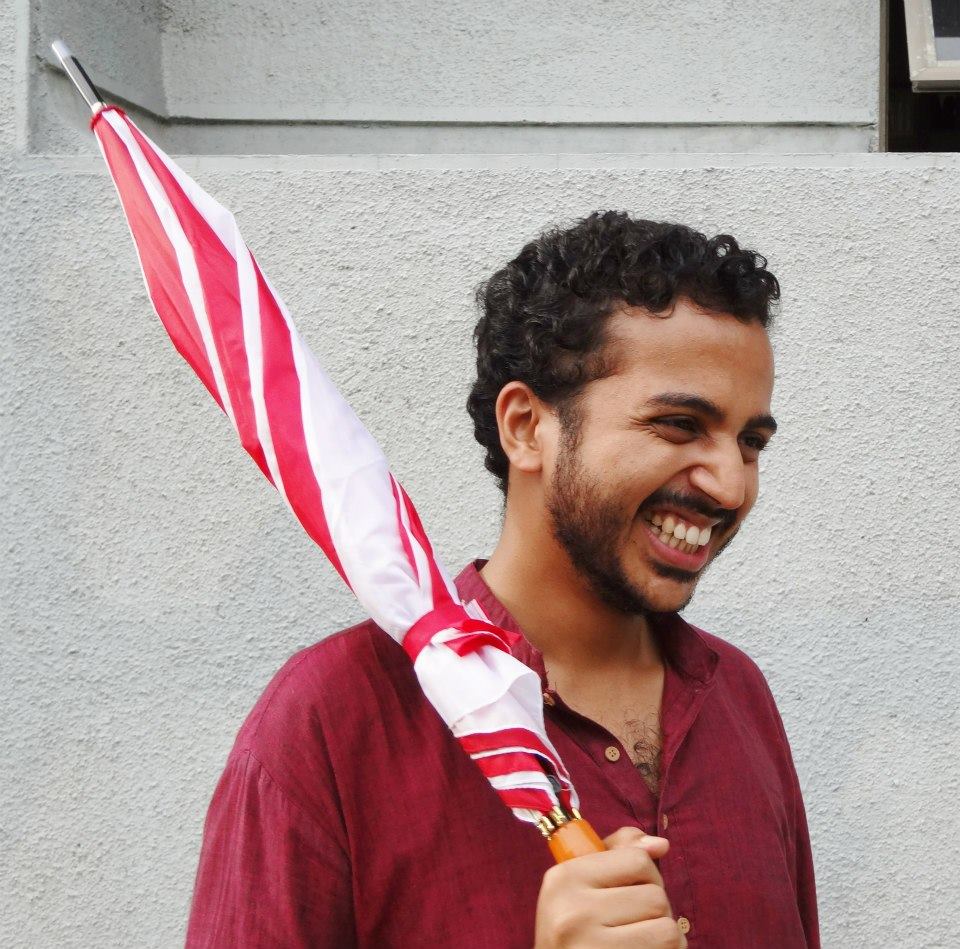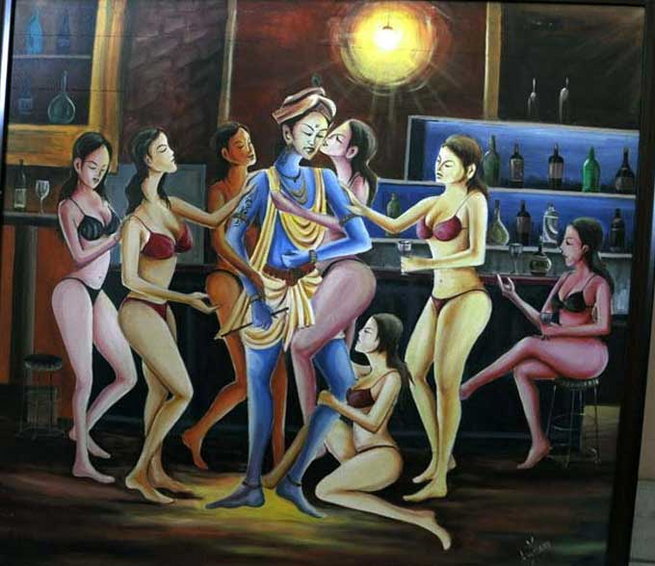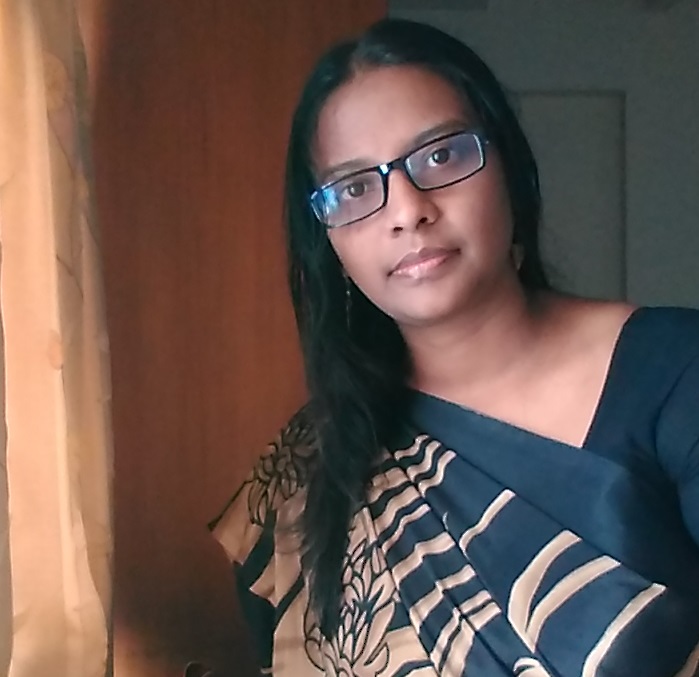Understanding caste formulations after 1990s:
Review of ‘No Alphabet in Sight: New Dalit Writing from South India’
(This review is a part of the theory course taught by Dr Bhangya Bhukya, Department of Social Exclusion Studies, English and Foreign Languages University)
Karthik Navayan
Caste is interpreted in different schools of thought in different ways; except Ambedkar and some other Dalit writings, many scholars have looked at caste from a traditional approach. But the recently published book ‘No Alphabet in sight’ is filling that gap in academic writings on caste.
The book ‘No Alphabet in Sight: New Dalit Writing fom South India’ is a compilation of Dalit writings from Tamil Nadu and Kerala; initially they were all published in their own regional languages in little magazines and newspapers. They were all gathered, translated and published as a dossier – I, by Penguin in 2011. K Satyanarayana and Susie Tharu edited and introduced ‘No Alphabet in Sight’.

This is a review of the 70 page Introduction to No Alphabet in Sight. This introduction offers an elaborate background and context of new Dalit writings in the South Indian states of Kerala and Tamil Nadu and refers to the establishment of new Dalit organizations, magazines that contributed to the articulation of Dalit aspirations in these writings.
Introduction to this book starts with a poem ‘Identity card’ written by S Joseph, which explains the pain felt by a student on the parting of a lover after she comes to know his caste through the red mark on his identity card, which indicates his identity as a scheduled caste boy who receives stipend. The editors argue that this is not a traditional taboo but a modern stigma of caste. It is assigned by modern means in a modern institution. ‘Ironically, it is precisely that which offers possibility of escape from the caste stigma, a state stipend, higher education, reservation that also stigmatises him, mocks at his aspirations, returns him to his place, exposed humiliated, externed from the world of those normal, others who can love and unite’. They also observe that a ready-made sensibility allows the common reader to consider her action only natural and understandable.
The essence of this book, the editors explain in their own words: ‘this is an attempt to record the late 20th century shift in conceptualizing the Dalit question‘; they also write that ‘when Dalits themselves formulate the Dalit question they bring innerness to the enquiry’.
A clear shift is visible in this book with regard to the articulation of caste and reservations of the marginalised communities after 1990s. The Mandal commission recommended reservations for the other backward classes in 1990. And upper caste students organised anti-reservation campaigns in all universities and questioned the basic concept of reservations. In this situation, the Dalit activists, students and intellectuals started a movement for the protection of reservation system and opposed the upper caste students’ arrogance.
There were group atrocities, and mass murders of Dalits across India during this period; this is the time many Dalit organisations were established without any political affiliations to fight against the atrocities on Dalits. The word Dalit also got acceptance, replacing harijan. The editors say that Dalit scholars after 1990 re-read Ambedkar and proposed an alternative anti-caste intellectual tradition in Indian history.
The editors very brilliantly explain how articulatiion on caste now is very different from the earlier period; they have made some important formulations to understand the caste system in modern spaces. The theorisation of caste undergoes transformation in the 1990s; the commonly held idea of caste that ‘caste is a remnant of pre-modern hierarchical purity pollution formation specific to the Hindu religion is criticised and rejected.’ It is observed that caste is a live force in Indian culture and politics and caste is not the problem of only the Dalits. According to the editors, caste is configured as a form of power, it structures social relations therefore also state actions, and it works in renewed and updated forms.
The second line of critique is of the norm of the secular citizen – this normative figure and his assumed neutrality show up as marked by case and as reaping the benefits of caste power and privilege. Those who ask reservations based on caste are branded as casteist and those who deny caste are considered casteless, therefore secular. Dalits pointed out that this understanding of caste was faulty and biased and that it obscured the connection between caste and the privileged life of the ‘secular’ Indian middle class.
It is like, those who speak about Marxism are Marxist and those who speak about caste are casteist; those who spoke against corruption are anti-corruption but those who speak against caste are casteist.
Caste is re-conceptualised as institutionalised in the modern state as a form of power and source of privilege in this book.
The absence of Dalits in the media, information technology, and monopoly of dominant caste groups in these sectors is casteism. Balagopal made a similar observation that the upper caste youth displayed their caste arrogance, superiority and power in the anti-reservations movement.
Even the secular self-narrative in the Mandal discourse stigmatised caste identity. While the upper castes bring their culture and self-esteem into the modern secular arena, Dalit life world is suppressed in the mainstream, dalit identities are undermined, their arts, culture and history devalued and stigmatized. Dalits contested the tendency of treating caste only as an instrument of oppression, and re-created it as a new identity of self-assertion and unity. Caste is now a conceptual formation that may be employed to theorise prestige, arrogance, privileges, dignity and power of a social group.
These are the very important observations, and they help us understand how caste operates now.
While explaining about the land struggles, the editors have made a brilliant analysis of caste – they say that the caste alliances, and interest around the land are found not only in the villages, they are also operative in policy decisions, official attentiveness, police actions. They are institutionalised in law reforms, administrative regulations and procedures. Indeed, in public life as a whole.
The editors refer to a singer in Kerala, who collected songs on land from Dalits and Adivasis. In his opinion the ‘Dalits did not only till the lands as labourers, they also possessed scientific and managerial knowledge of soil, its cultivation, the agrarian calendar, the agriculture economy, labour management and so on.‘ Dalit thinkers today argue that such intimacy explains the relationship between agriculture and food.
They observe that the mode in which mainstream history practices its relationships with the past is biased and deficient. Some Dalit thinkers challenge this very form of history. Where was this modality shaped in the interest of sovereign power? The writings of subaltern studies, translation of Ambedkar writings in regional languages have both inspired Dalit historians.
While writing about the K.K. Kochu, the editors quote him: ‘modern Marxian historiography does not deconstruct the hegemony of communities in the nationalist historiography’. He goes on to say:
DD. Koshambi studied the changes in the relations of production to understand the shift from a primitive tribal society to an agrarian society. He drew his evidence from the dominant sources such as relics, inscriptions, archaeological survey and literary works and arrived at the preposterous view that the Brahmin was the leader of agrarian activity.
Kochu argues that when nationalist and communist movements posited a modern community during 1930–1940, Nairs, Eezhavas, Syrian Christians and Muslims constituted the new modern Kerala, while Dalits had no place in this political formation.
While discussing the Dalit movement in Tamil Nadu, they talk about Dravidian nationalism and its dominant discourse. Raj Gowthaman observes that ‘whenever Periyar or communist movements are strong there were no Dalit articulations‘. The Dalit scholars charged the Dravidian nationalism with suppression of Ayothee Thass and of the Dalit Buddhist identity. They also brought about the recovery of figures such as Ayothee Thass, Ayyankali and Poikayil Yohannan.
Another important observation of the editors is that earlier atrocity reporting, reform talk, polemical statements and policy proposals were largely done and addressed primarily to the non-Dalits. They say that the present document, a text encapsulating articulations of a quarter century or so – from the beginning of the late 1980s till now – is a treasure trove of fiction, poetry, oral and written memories and oratory. They don’t follow the protocols of social science writings but take their cue from literature with more direct and promiscuous involvement with life.
A criticism from a Dalit story that finds mention in the book illustrates this dfference in approach:
‘..the life which left writers portray is a wooden doll without life. Why are Dalits always portrayed in stereotypical ways as landless, easy to anger and so on? Dalits own land, they work, they tend cattle, they are playful, artistic, know how to get along and have a good moral life.’
According to the editors, this dossier demonstrates how Dalits as activists and intellectuals occupy public sphere and articulate questions of representation in national institutions, share in political power and participate equally in the civil society as well as in the sphere of imagination. The stereotypical view of Dalits as primitive and traditional people with no cultural and intellectual resources and therefore as victims of social oppression and marginalisation is seriously contested in all writings in this book.
Dalit scholarship makes a strategic intervention in the field of knowledge. Dalits are now seen as an influential social group that can challenge dominant social groups and the State and redefine the nation as a whole.
Finally, they conclude that in the new discourse, caste is reshaped into a social collectivity in which related castes engage in horizontal political groupings. This book opens up a deeper story of the rise of Dalits as a modern community.
The editors covered almost all aspects of caste; it actually sharpens the understanding of a reader who sincerely wants to understand caste. This introduction should have also covered some more aspects that contributed in this development of the Dalits as a modern community. The left movement ignored the caste problem from the beginning, but in the initial stages it was only the Naxalite movement which was available to the Dalits in Andhra Pradesh. Dalit activists who had become part of the Naxalite movement in that kind of a scenario have now returned and joined the other Dalit forces. There are many Dalits who still continue to be involved in the Naxalite movement. The left impact on the Dalits still remains; some of the Dalits say: for revolution in India there is a need to follow Ambedkar and Marx, together.
Another point is that caste is no more an Indian problem now, it is a global phenomenon. In 2010, the United Kingdom government had included caste discrimination as one of the forms of racial discrimination in the Equality Act – 2010. This book was published in 2011, it would have been better if the editors had included the efforts of Dalits in the UK, and their research on caste in this introduction as caste has also spread and has become influential in other countries of the world. The Indian Dalit groups are trying to bring about laws in USA and Australia to counter caste based discrimination of the Non-Resident Indian upper castes.
There was a strong Dalit movement in southern Tamil Nadu in the period following independence; the Pallars organized themselves and were fighting back the atrocities of the Thevar community. They were under the leadership of Immanuel Shekaran, who was murdered by the Thevar caste leaders. This history is missing in this book and only one writer, Dr Krishnaswamy, was included. But there are many more writers from the Pallar community who deserve a place in this book.
The editors, apart from introducing the Dalit writings, have also came up with certain new formulas to understand the caste problem in modern spaces. This book is a must read for anyone who wants to understand caste in modern times.
~~~
Karthik Navayan is a human rights activist.










